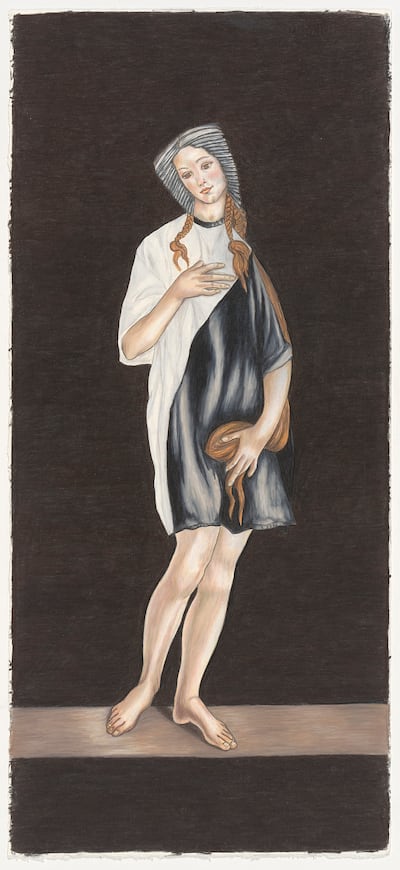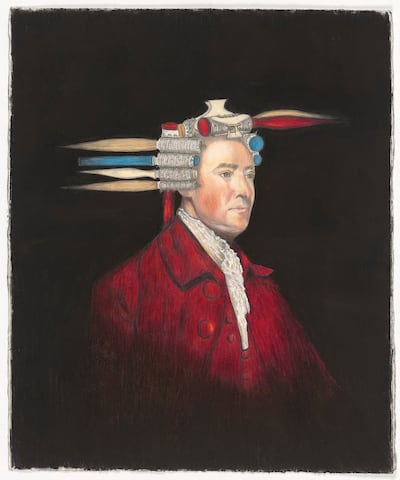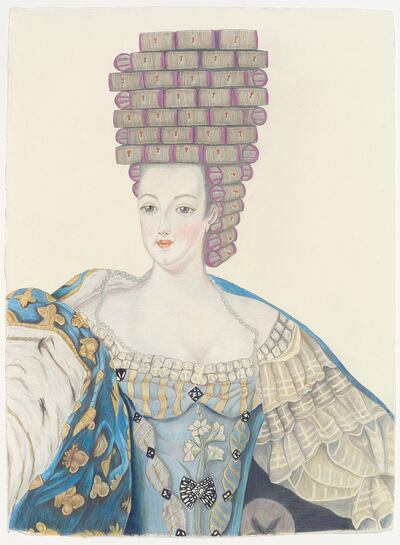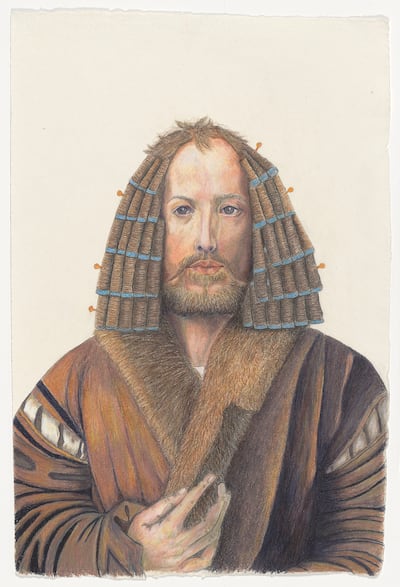An artist, a hairdresser and a sociologist walk into a gallery ... While that might sound like the start of a shaggy dog story, it is actually the essence of Amanda Jane Graham’s new exhibition. The Coiffured, which opens at the Irish Architectural Archive on January 18th, is a fascinating exploration of the art behind many of the world’s most famous artworks.
Through Graham’s drawings and sculptures, we see Botticelli’s Venus as a work in progress. The iconic figure wears a salon smock, her long tresses a mass of tinfoil highlights. Elsewhere, Albrecht Dürer gets ready to take his own close-up. Preparing for his famous 16th-century self-portrait, the artist’s trademark curls are bound up in spiral winds. Of course, perms and spiral winds didn’t exist in Germany (or elsewhere) in the 1500s, as Graham is quick to acknowledge. Instead she wants to draw attention to the creativity and artistry of hairdressing, a profession that is frequently derided, its practitioners undervalued.
The roots of the exhibition lie in the Leitrim-based artist’s own life. “Considering creative occupations that did not require attending college, hairdressing was a perfect fit,” says Graham. The profession savours individuality and creativity, and I believe it to be sculptural – making shapes with hair and air.” Graham worked as a hairdresser for 22 years, later using her earnings to support her studies at the National College of Art and Design.
Following up her master’s degree with a further qualification in sociology at Maynooth University, she went on residency at Image Skillnet, a not-for-profit training network supporting the hair and beauty sector in Ireland. Underpinning her explorations was the desire to investigate the negativity that surrounds the profession of hairdressing. As part of the exhibition, a sound installation, experienced under a hood-hairdryer includes the voices of 16 hair stylists responding to a series of questions aimed at discovering the passion that fuels them, and the discrimination they experience.
READ MORE


That discrimination has a fascinating history. Untangling it in an accompanying publication, we discover how the earliest evidence of hairdressing dates from about 3400 BC, and the tomb of the Egyptian architect Kha and his wife Meryt. When the tomb was opened in 1906, Meryt was buried with two baskets of hair accessories, including a wig, hair extensions, hairpins, razors and combs, clearly considered vital for the afterlife. “In Pharaonic times hairdressers held a beatified social status. They were priestesses,” notes Graham.
Fast-forward to pre-revolutionary France, and hairdressing was booming, having been incorporated into the guild of surgeons, barbers, wigmakers and bath attendants. But, resenting guild restrictions, the hairdressers broke free, arguing that their practice was not only high art, it was vital to the portraiture of the era. They even published a manifesto, but it was rejected. Intriguingly, their elevated role seems to have sown the seeds of the profession’s downfall, as it became intrinsically linked with the excesses of the court of unlucky Austrian archduchess Marie Antoinette and her husband, Louis XVI.
In the exhibition, Graham shows two coloured pencil sketches of Marie Antoinette, following historic portraits of the queen’s famous pyramid-shaped up-do. The ultimate in what would today be termed celebrity excess, the hairstyle caused crushes at the Paris Opéra, made stars out of hairstylists, and impoverished those who felt they too required a hair creation that included jewels, feathers, plumes and at least two pounds of flour.
All of this meant that, when the crops failed in 1775, hairdressers were in the firing line for criticism. In England, following the French revolution, the wealthier classes lived with the insidious fear of contagion. What if this spirit of weaponised equality was to make it across the Channel? In the exhibition catalogue, political scientist and law professor Don Herzog quotes Irish politician and philosopher Edmund Burke, declaring at the time that “the occupation of a hairdresser cannot be a matter of honour to any person”. As Herzog puts it, “Burke wasn’t trying to be funny. He was taking deadly aim at what he saw as the pernicious fantasy that we’re all equal.”


Burke features in the exhibition in a bright red jacket, his hair held in round blow-dry brushes, secured with butterfly clips, and while there is an obvious swipe at her subject, Graham’s image also gives rise to the idea that perhaps some of the stigma aimed at hairdressers also comes from how vulnerable we become in the salon. After all, our hair, and our precious self-image is in someone else’s hands, and whoever we like to think we are, they, for the time being, are in control. No wonder some like to try to take them down.
The politics of hair also has different specifics. Writers such as Zadie Smith, Emma Dabiri and Chimamanda Ngozi Adichie have explored the complexities of natural African hair in westernised cultures. Graham adds Emma Tarlo’s explorations of hair in her 2016 book, Entanglement. During the various Covid lockdowns, a great deal of conversation took place around the role of the hairdresser in society. Questions about self-image, self-definition and self-determinism were discussed, as were the mental health benefits of spending time in company. As Graham’s research shows, these questions are as old as art itself. And so is hairdressing. “When you’re looking at the art of a certain era,” Graham reminds, “you’re looking at the art of someone behind the artist: the hairdresser. I put the hairdresser into the frame. The fact is, the gods had their hair done in the arts.”
Coiffure is at the Irish Architectural Archive, until February 24th. iarc.ie
The Coiffured – in Conversation takes place at 3pm on January 18th at the Irish Architectural Archive. Speakers include Amanda Jane Graham, Dr Declan Long, Dr Jonathan Price and Kerstin Mey. Admission is free, but booking is essential at iarc.ie



















